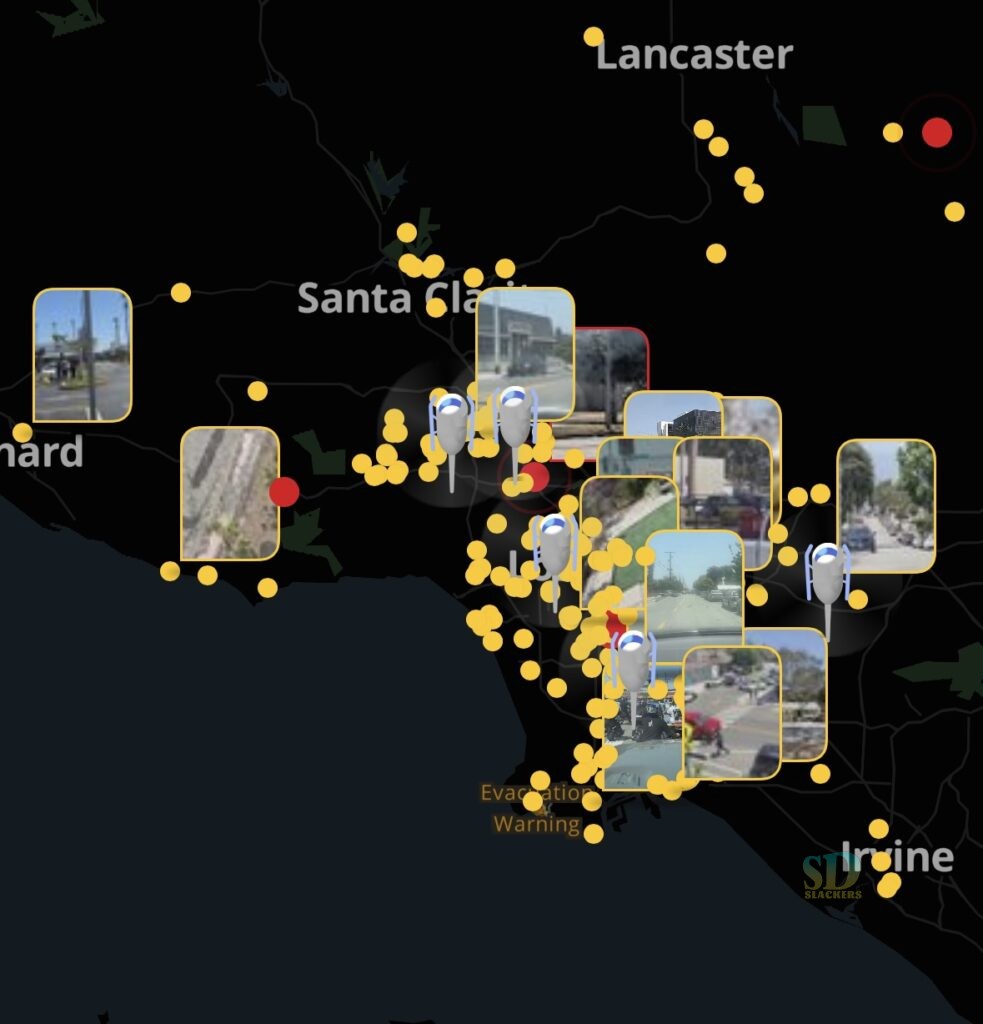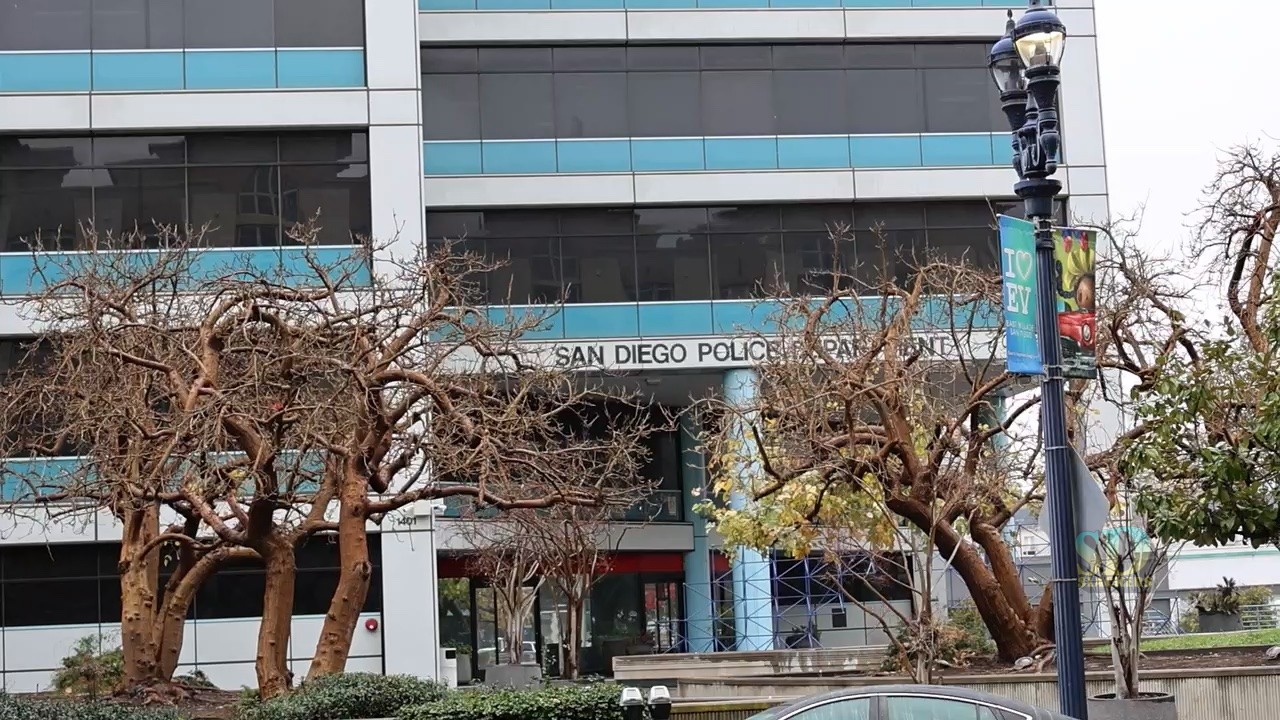It has now been three weeks since the San Diego Police Department cut off public access to its radio traffic. For journalists, independent videographers, and members of the public, the change has created a confusing and frustrating new reality. There’s no scanner traffic, no real-time updates, and very little transparency into what’s happening in our own city.
But after weeks of silence and unanswered questions, the department may finally be taking some initial steps toward addressing the gap.
A New Voice at SDPD
On June 23, I spoke by phone with Lieutenant Travis Easter, who confirmed that he is now serving as SDPD’s new Public Information Officer. He replaces Lieutenant Daniel Meyer, who is transitioning to a different unit. According to Easter, the change is part of a normal departmental rotation and not the result of any disciplinary action or controversy.
We discussed many of the issues that have been raised since encryption began, starting with the SDPD Dispatch Online page. Lt. Easter believed the page had more detailed information available, but as we reviewed it together, he was surprised to find that it doesn’t provide much at all. There’s no clickable information, no call details, and the data is delayed.
He acknowledged the limitations and said there is an internal process required to make changes to the system. While he couldn’t commit to a specific timeframe, he said he would be surprised if it took more than a month to begin seeing improvements.
A Better Data Model Already Exists
We also discussed how other agencies handle public access to call information. The San Diego County Sheriff’s Department doesn’t publish full CAD logs, but they do offer a simple “calls for service” page. It lists one-line summaries of each active call, includes location of rough addresses, and most importantly, updates in near real time. Unlike SDPD’s system, there’s no one-hour delay.
The California Highway Patrol goes a step further. Their public CAD system shows near real-time updates for traffic-related incidents, including crashes, hazards, and road construction patrols. It doesn’t include traffic stops, but it does provide detailed, timestamped entries for active events and only redacts lines that are marked confidential. It’s not perfect, but it’s fast, reliable, and far more transparent than what San Diego currently offers.
I suggested to Lt. Easter that SDPD could build something similar — a real-time log that shows incident type, location, and call progression, while redacting sensitive information when necessary. He seemed open to the idea and said he would take that suggestion back for discussion.
Scanner audio gives more than just raw facts. It helps us understand the situation based on tone, pace, and urgency. But if radio access is gone for good, then real-time data — even if text-only — could go a long way toward restoring public awareness and enabling responsible reporting.
What the Numbers Show Us
The Watch Commander reports have been a major point of concern from the very beginning. The last one I received was dated June 14. Since then, there’s been silence. In those rare instances when a report is sent, it usually focuses on traffic collisions. That leaves a massive information gap, especially for incidents that are serious, but not high-profile enough to trigger a press release — things like shootings, stabbings, or violent assaults.
Lt. Easter acknowledged the inconsistency and explained that Watch Commander reports are managed by another lieutenant. He also admitted he doesn’t know what the criteria are for when reports are written or sent. I asked whether internal shift summaries or daily logs already exist and whether any version of them could be made public. He agreed to look into it.
To better understand how big this gap really is, we created the chart below.

This graphic compares the number of assaults with a deadly weapon and homicides reported across the City of San Diego — based on open data sources — with the frequency of Watch Commander reports and official SDPD press releases received by the media between June 2 and June 14.
The results are hard to ignore. Over a span of almost two weeks, we saw dozens of violent incidents occur throughout the city. Yet only a handful were acknowledged through official communication channels. Most went completely unreported to the public, unless someone happened to catch them by luck or word of mouth.
This isn’t just a communications issue. It’s a transparency problem. Before encryption, we could at least hear when something major happened. We could show up, ask questions, and let the public know what was going on. Now, unless SDPD chooses to tell us (and often, they don’t) those incidents simply disappear.
This is exactly why we’re calling for a new model of public reporting. If radio traffic remains locked down, then the city needs to replace what it took away. That could mean more consistent Watch Commander reports, a real-time CAD system, or public versions of internal shift logs. Whatever the solution, the status quo isn’t good enough.
What We’re Missing
The consequences are real. On June 20, someone posted on the Ring app saying their brother had been killed in a hit-and-run crash. The suspect was still outstanding. This person was begging for help and trying to spread the word however they could. But the media never reported on it. No scanner traffic, no Watch Commander report, and no alert from SDPD. We had no idea it even happened.
If we’d been able to get to the scene that night, document it while it was fresh, and get eyes on the area, maybe a witness would have come forward. Instead, it vanished into silence.
Another night, I was parked on a hill with a clear view and saw two police units speeding through an intersection. I couldn’t tell whether it was a code three call or a pursuit. I checked PulsePoint, I checked community forums, I tracked the helicopter on FlightRadar. Nothing came up. Moments later, the same units passed by again in the opposite direction. It sure looked like a pursuit, but I never found out for sure.
In another case, I followed La Mesa police vehicles responding code three to a motel. I pulled into the parking lot with my camera in hand and no idea what I was walking into. Fortunately, it was just a domestic disturbance. Unfortunately, that meant wasted time, fuel, and effort. But the bigger issue was safety. If the situation had been dangerous, I would have had no way of knowing that before stepping onto the scene.
The Public Is Asking Questions, and No One Has Answers
Our SD Slackers Discord community has seen the shift firsthand. Users are still asking what’s going on when they hear sirens, see helicopters, or watch a convoy of police vehicles drive past. But now, more often than not, we have no answers.
In one case, a user saw around twenty police cars gathered on their block. A helicopter was circling overhead for several minutes. I confirmed the air activity using flight tracking and called the Watch Commander’s office to ask what was going on. They didn’t know. That’s where we are now — even SDPD staff can’t always get information internally.
It’s frustrating, and it’s damaging to public trust. This isn’t just a transparency issue, it’s a service issue. The public has legitimate questions and deserves timely, accurate information.
Impact on Freelancers and Local News
It’s not just the public that’s being left behind. Independent videographers — the freelancers who chase crime scenes, crashes, and breaking news — have been left in the dark. TV news stations are buying fewer crime stories. Newsrooms that once relied on community footage are now airing more lifestyle pieces and fewer urgent reports.
For those who need this work to support themselves, the silence is costly. For those of us driven more by purpose, it’s just deeply frustrating. We know things are happening. We just don’t know where, when, or what they are anymore.
The Downstream Effect: What the Public No Longer Sees
What may not be obvious inside the department is how much of the public’s awareness and safety relied on the downstream flow of unencrypted radio traffic. When a call used to go out over the air, it wasn’t just journalists and scanner hobbyists who were listening. That audio fed an entire ecosystem.
Some of that included machine listening systems — audio-to-text tools that were trained to recognize police dispatches in real time. Some of it came from human operators monitoring incidents and publishing updates. And some of it came from community-driven apps, like Citizen, which turned radio calls into location-aware alerts and interactive crime maps.
Apps like Citizen didn’t just inform people — they mobilized them. A user nearby could get an alert that a robbery or car crash was unfolding down the street and make the decision to safely observe, record, or assist. It empowered everyday people to participate in real-time reporting and gave the public much greater visibility into public safety events.
That system is now broken in San Diego. Without radio traffic, apps like Citizen have no awareness of what’s happening. The contrast is clear. Below are two screenshots from the Citizen app taken at the same time — one from Los Angeles, where LAPD radio traffic is still unencrypted, and one from San Diego, where the map is mostly blank.


The difference isn’t because San Diego is crime-free. It’s because the information no longer exists upstream. Nothing can flow downstream when the source is cut off.
This problem doesn’t just affect police coverage either. Watch Duty, the wildfire information app widely praised across California, relies heavily on monitoring radio traffic from fire departments to track fires, structure threats, and evacuations in real time. They do have human analysts and reporters, but even they rely on open radio systems to do their work. Thankfully, fire communications remain public — for now. But if radio encryption expands to those channels, the public would lose another critical tool.
There’s a reason these tools have gained trust. They work. And they work because they were built on top of an accessible public information stream.
San Diego’s encryption decision has created a ripple effect. The public didn’t just lose the ability to listen to police radio — they lost access to a whole web of downstream services and situational awareness tools that had become part of everyday life.
Looking Ahead
Despite all this, I came away from my call with Lt. Easter feeling cautiously optimistic. He took time to listen, acknowledged the problems, and didn’t try to brush anything aside. He seems open to exploring solutions, whether that means upgrading the dispatch website, publishing real-time CAD logs, or clarifying internal responsibilities for sharing information.
But hope only goes so far. Real improvements will require follow-through.
Three weeks in, the silence hasn’t just been inconvenient. It’s prevented timely reporting, obscured serious crimes, and made our community feel disconnected from the city’s safety efforts.
The department’s media policy was written at a time when journalists could hear what was happening and decide for themselves what mattered. That’s no longer possible. If SDPD wants to maintain any level of accountability or public trust, then it needs to build a new model — and fast.
We’ll be watching closely to see what happens next.




